Last Updated on July 19, 2024 by lindseymahoney
Looking for decorative wall trim ideas to add architectural interest to your home? You have come to the right place! When considering what type of wall moulding to include in your home, it is important to choose a style that is appropriate to the architectural style of the home.
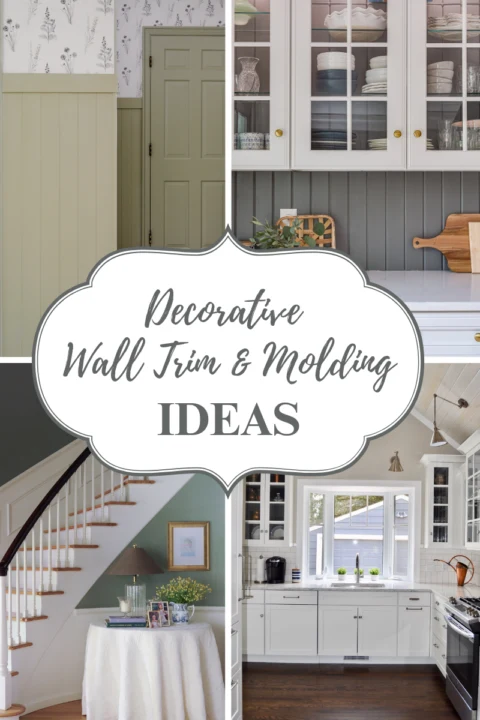
Decorative wall trim and molding take a boring box of a room and breathe life into them with character and charming accents.
In general, decorative wall trim molding feels the most natural in a home when it aligns with the overall design aesthetic of a home. When choosing decorative trim and molding for your home, remember to consider the size and balance along with the overall style.
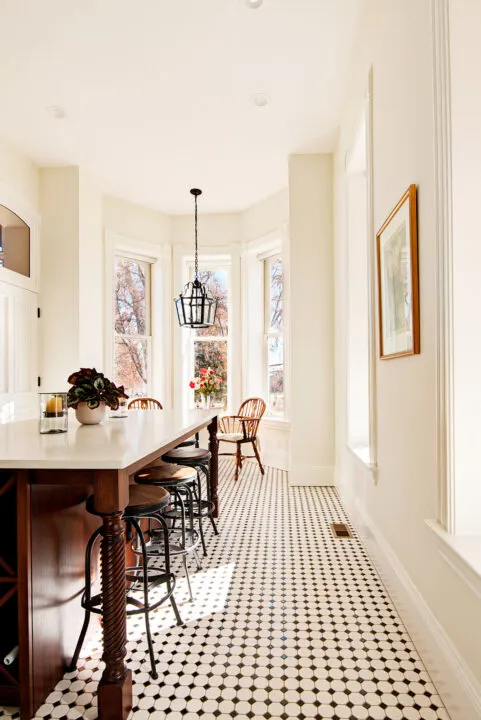
For example, a very large room with high ceilings probably calls for larger trim pieces and allows for more intricate designs. That same trim and molding can feel too large in a small room of an early American-style home.
Table of Contents
- Popular Architectural Styles
- 9 Decorative Wall Trim and Molding Ideas to Try at Home
- 1 | Picture Frame Wall Molding (Box Molding)
- 2 | Picture Rail Decorative Trim
- 3 | Chair Rail Molding (Dado Rail)
- 4 | Wainscoting Decorative Trim
- 5 | Bead Board (Tongue and Groove Planks)
- 6 | Vertical Tongue and Groove Planks
- 7 | Shiplap Walls
- 8 | Board and Batten Decorative Trim
- 9 | Crown Molding & Baseboards
- BONUS: Accent Walls
- Choosing Decorative Wall Trim and Molding for Your Home
- More Content You Will Love
Three important considerations when choosing decorative wall trims and molding:
- Style
- Size
- Balance
It is also important to use a style of interior trim that compliments the overall design aesthetic and architectural details of your home. Ideally, you want the interior of your home to align with the exterior style of your home.
For example, if the exterior of a home is clearly mid-century style, you will want more simple trim and molding that aligns with mid-century period designs.
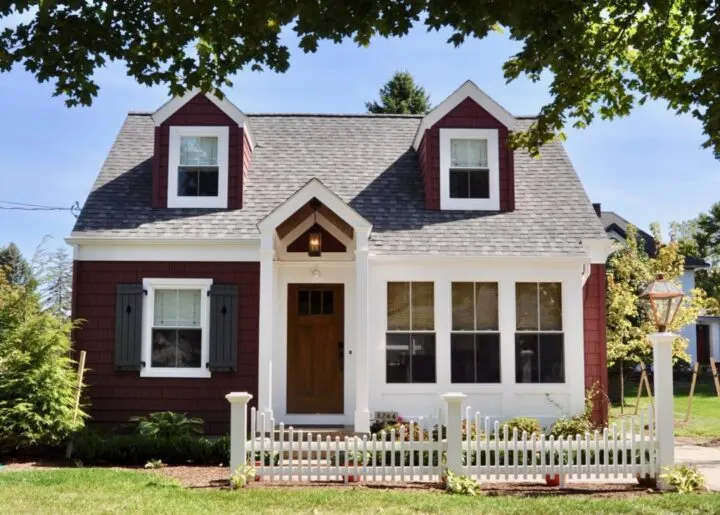
Popular Architectural Styles
- Traditional style: This is a very broad category with many design styles falling within this bucket including Georgian, Greek Revival, Colonial Revival, and Federal styles
- Craftsman style: Closely linked to the Arts and Crafts movement. I would also bucket mid-century style homes in this category. The trim treatment for these styles have clean lines and often use natural wood.
- Victorian style: Victorian style actually describes a period of time with many different design styles, however, many of the decorative features are ornate designs and adorned throughout each room.
- Country style: I would put Early American style and farmhouse style in this category with more simple and utilitarian trim design.
All of these American styles have been blended over the years so you can mix and match to a certain extent. I’m not sure professional interior designers would agree with that opinion, but there are many beautiful homes with a blend of these architectural styles woven throughout the home.
Let’s check out a few decorative wall trim ideas that you can add to your home.
9 Decorative Wall Trim and Molding Ideas to Try at Home
These decorative wall trim and molding ideas are a great way to add character and create an elevated look in a room! Many of these decorative moulding treatments are also DIY-friendly!
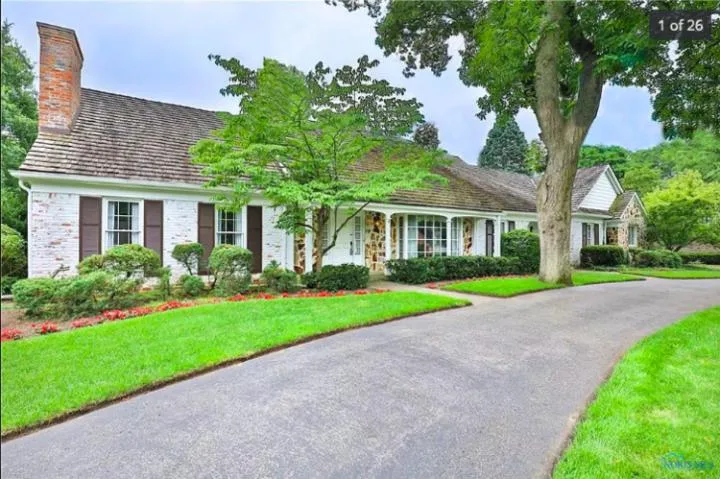
Our current home has primarily a traditional architectural style in the interior and exterior spaces. I also see some country cottage aesthetics as well with the German schmear on the bricks, cedar shingle roof, and carriage door entrance.
Decorative wall treatments that work in our home range from traditional styles to more relaxed and utilitarian trim styles. I don’t add any type of molding that is considered Victorian because that would not fit the overall aesthetic of the home.
1 | Picture Frame Wall Molding (Box Molding)
This decorative trim style became popular in the 18th century with wealthy homeowners to show their wealth and the symmetrical style of the time. This type of decorative wall trim feels very natural in traditional style homes but can add a formality to any room or style if done properly.
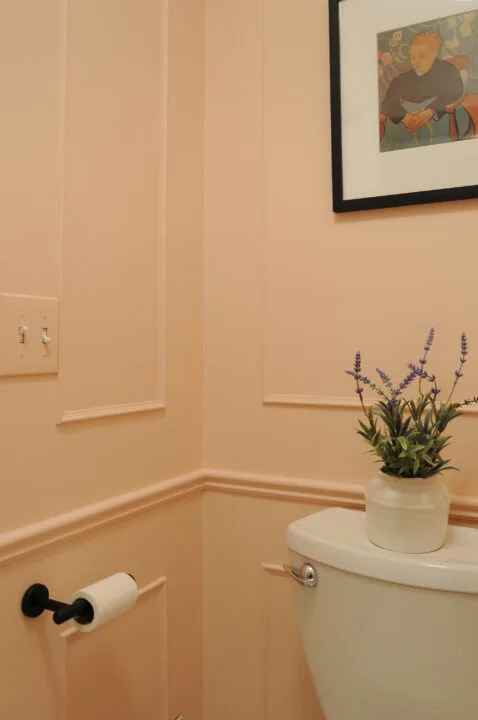
I added picture frame moulding to our main floor bathroom and it really elevated the look.
To be completely honest, I really wanted to try my hand at box molding and the small bathroom was a great place to try it out! The trim installation went quickly using a nail gun and in a weekend I had a little extra personality in our small half bath!
When determining the layout of the picture frame molding and chair rail, I referred to other rooms in my home with decorative box molding.

I took measurements of the chair rail and lower picture frame molding in the dining room and our front foyer.
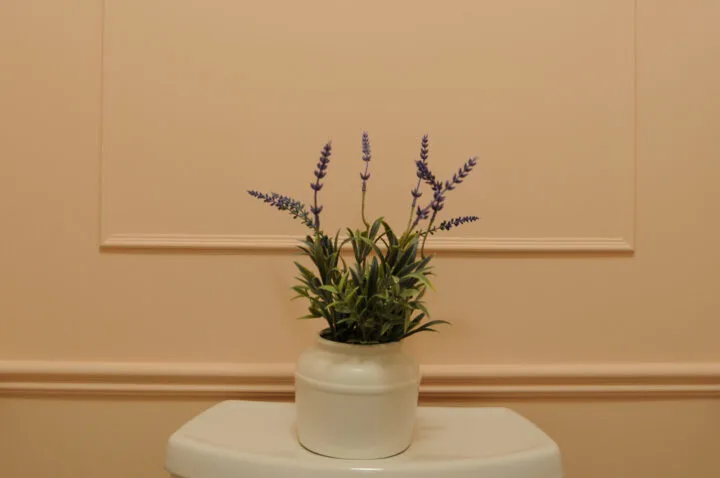
In the bathroom, I made sure to place the chair rail at the same height as the entryway and dining room. Consistency is the key to keeping the design cohesive within each room.
Finally, I chose a thinner trim piece for the small bathroom, but the shape is traditional in style and similar to the decorative trim throughout the house.
2 | Picture Rail Decorative Trim
Picture rail wall trim became popular with Americans in the mid-1800s as a solution to hanging artwork on plaster and lathe walls that easily cracked.
Picture rail trim is a beautiful architectural detail you can often find in historic homes. The most common installation is about one-quarter of the way down a wall.
The molding has a round top to allow for hooks to attach and hang artwork. The name for the wall area above the picture rail trim is the frieze.
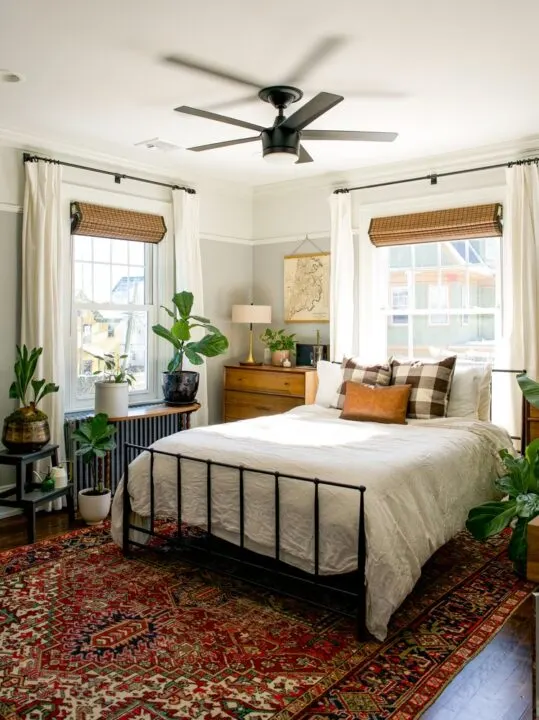
David and Steven of Renovation Husbands use the picture rail in a bedroom as an opportunity to use different paint colors in the room.
It looks like the top part of the wall is a lighter version of the color below and is a great example of customizing a room with decorative wall trim.
3 | Chair Rail Molding (Dado Rail)
Chair rails were originally designed to protect the wall from chairbacks and other furniture. Installation on the wall is typically at the standard height of someone’s waist where a chair hits the wall.

Today, while chair rails do serve the same function, it is more of a decorative wall trim feature that easily adds character and sophistication to an interior space.
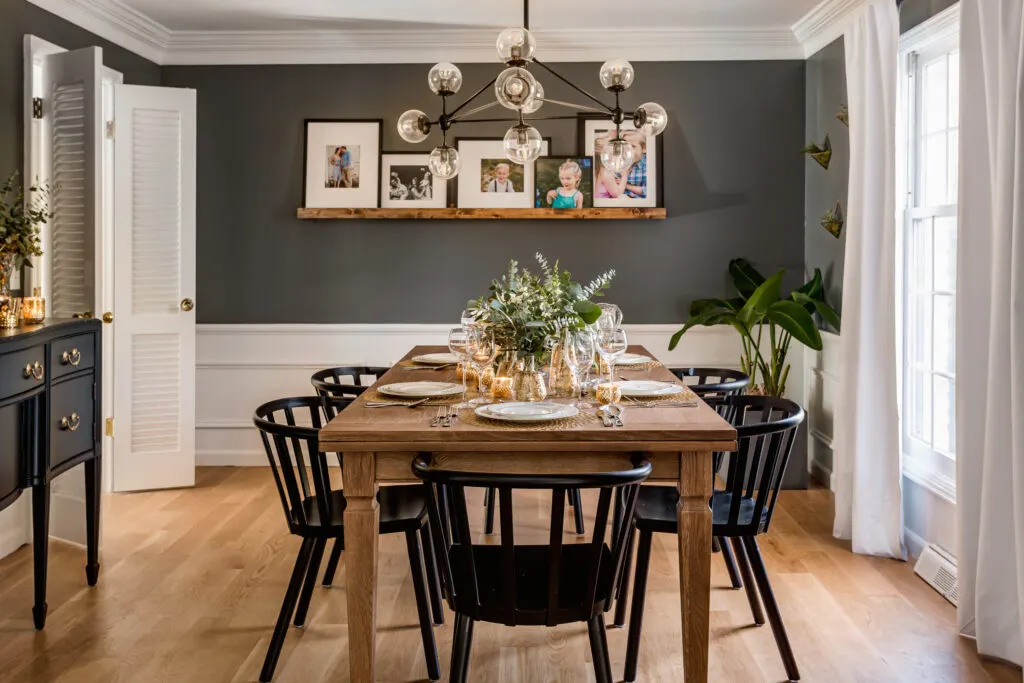
Traditional dining rooms and formal entertaining areas of a home often include chair rails and decorative trim details.
The chair rail trim style should either match or compliment the window and door casing within a room. Chair rail wood trim is also commonly used as a cap for wainscot and wall paneling in a room.
4 | Wainscoting Decorative Trim
Wainscot is a broad term for wall paneling that protects the lower half of an interior wall.
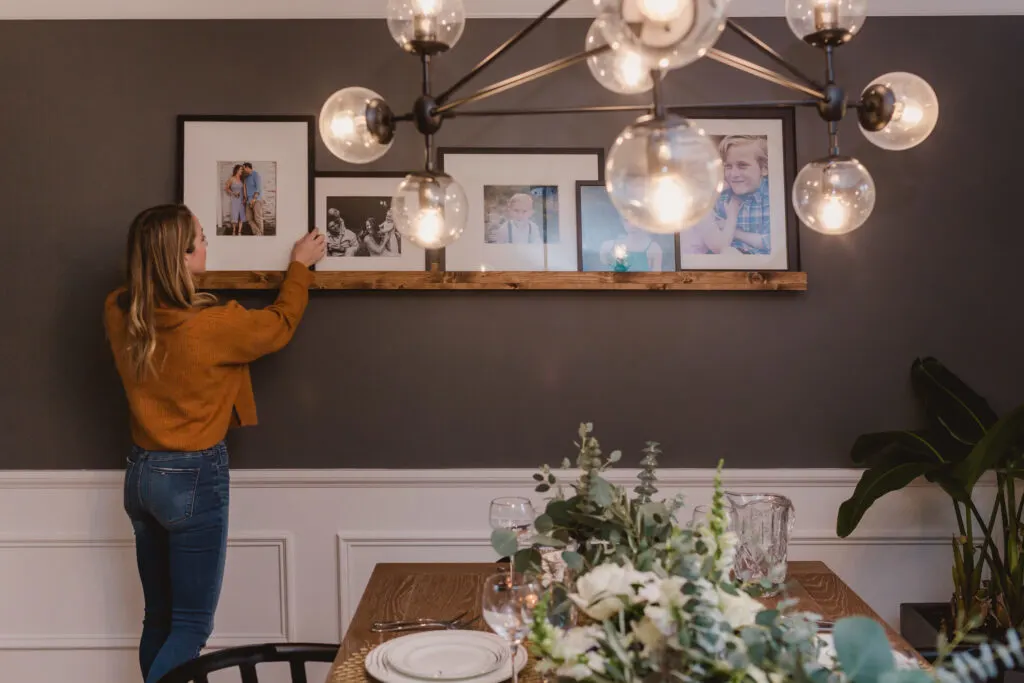
Any type of decorative wall trim or molding below a chair rail is technically wainscoting. Our dining room has a decorative wainscot treatment with a chair rail and decorative picture molding on the bottom of the walls.
5 | Bead Board (Tongue and Groove Planks)
Beadboard originated in England and was used in the homes of many early settlers in the New England area.
Early American homes were mainly built to serve a purpose, to protect settlers from the outdoor elements. Because of this, the design was simple and rustic.
This is probably why beadboard works so well in beach houses, farmhouses, and cottages. Beadboard adds tons of character to a space and is an easy way to create a more casual feel within a room.
Below, you can see Lauren from Studio Laloc added beadboard walls in her scullery. Lauren’s designs often have New England-style vibes and this cute scullery is a great example of that.
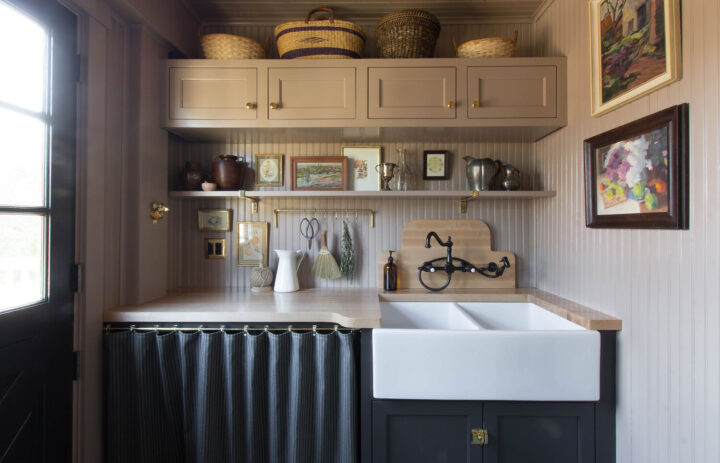
Below, designer, Jeff Unverferth, installed beadboard on the ceilings of his quaint cottage-style Airbnb.
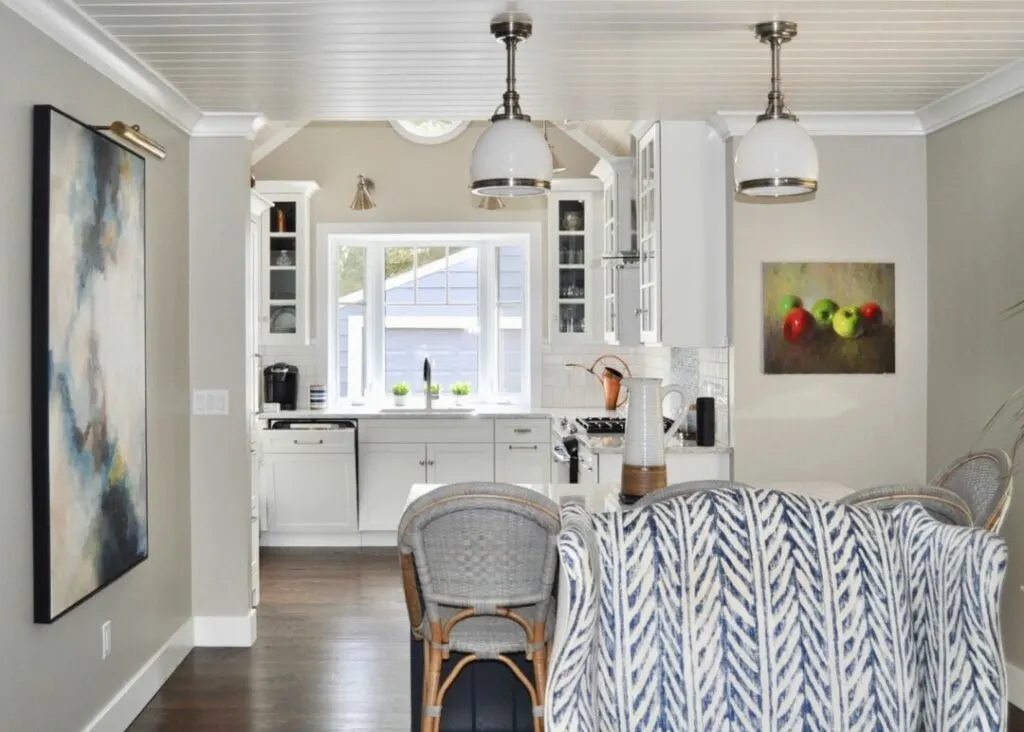
You will frequently find beadboard in kitchens and other utilitarian work zones of a home. It looks great as a decorative backdrop in cabinets to display kitchenware collections, too.
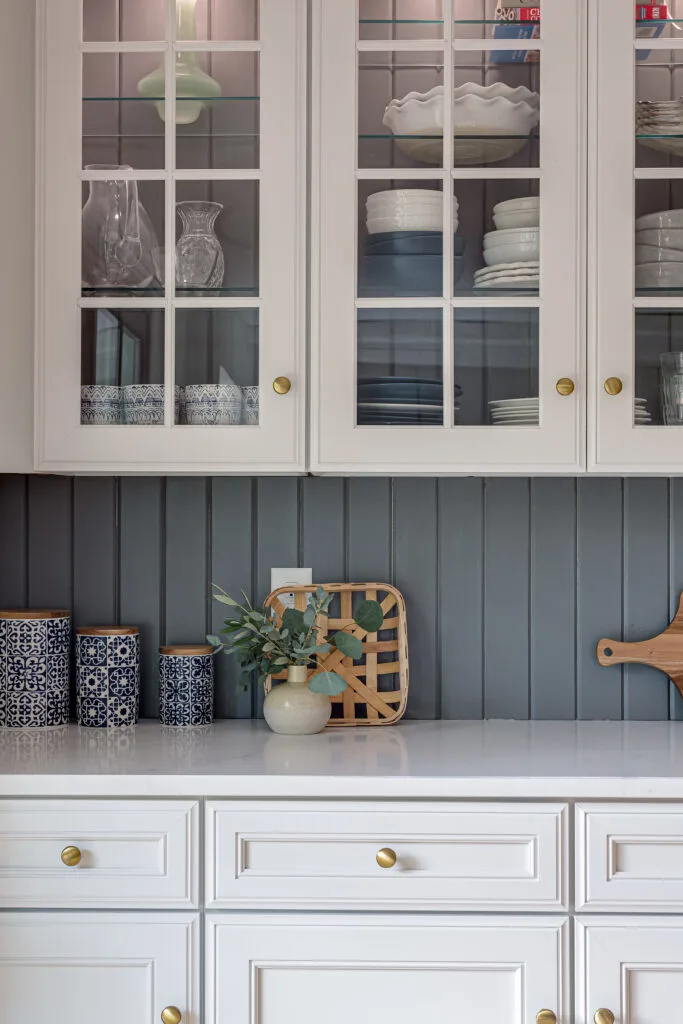
We designed a traditional style kitchen in our home and decided to add a wide plank beadboard as a less formal backsplash and architectural interest.
Beadboard is made of tongue and groove planks that form a small bead at the seam. You can also large sheets of MDF bead board at local hardware stores. This creates the same aesthetic and tends to be more affordable than individual planks.
6 | Vertical Tongue and Groove Planks
Vertical tongue and groove plank walls are another example of wainscoting in a room and similar to the beadboard wall treatment.
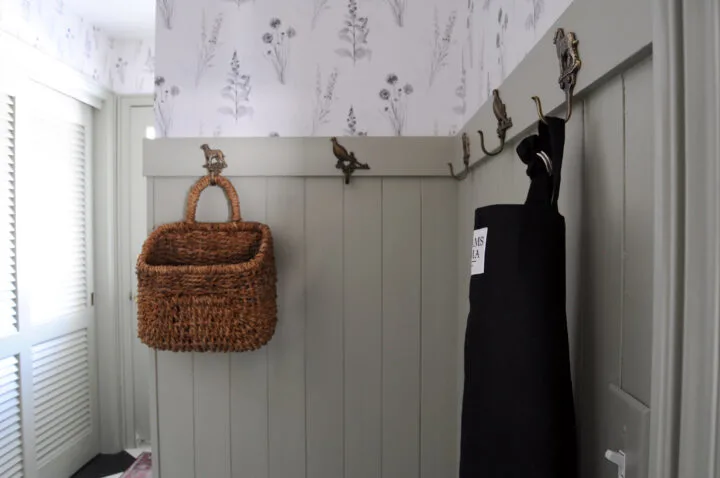
Installing tongue and groove planks in a room instantly adds texture and decorative interest in a room. This trim project gave our mudroom the visual interest it was lacking! The chair rail is a great endpoint for the floral and fauna wallpaper installed in the top quarter of the room.
This decorative woodwork is essentially beadboard, but with wider slats and no beads. It is also just a horizontal shiplap treatment with vertical installation.
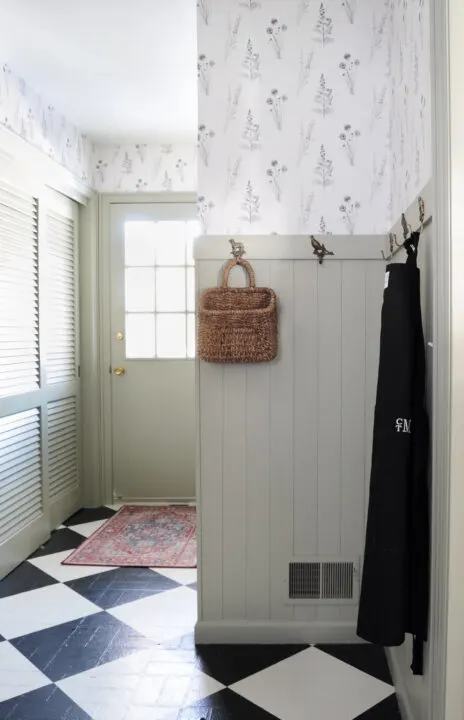
It looks great in all home styles, but it definitely has a more casual feel to it. In my opinion, adding this feature to a formal dining room would make the room feel cozy and casual.
7 | Shiplap Walls
This wood treatment got its name because the tongue and groove planks were originally used to make ships. Shiplap was then used in homes before the invention of drywall to use as a base for wallpaper installation.
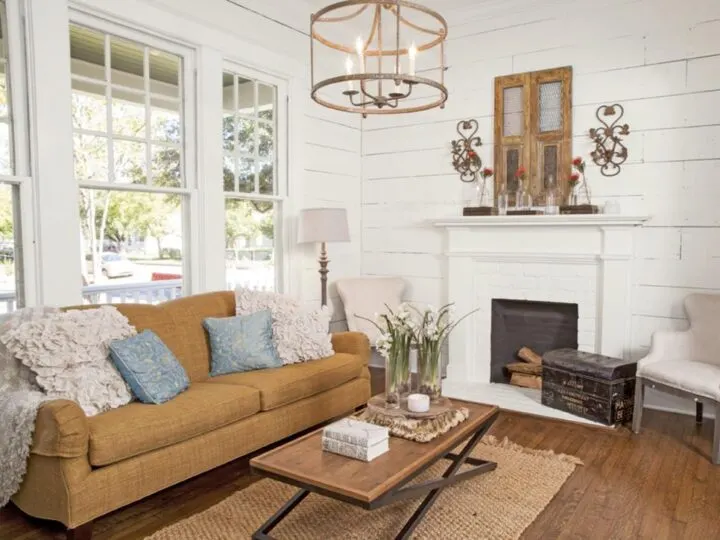
Shiplap had a resurgence in the 2010s thanks to the hit show, Fixer Upper. When renovating older homes in Texas, Joanna Gaines would frequently find shiplap behind drywall or under old wallpaper.
With limited budgets, she used these horizontal pieces of wood to her advantage and turned it into her unique style.
This began the shiplap craze that went hand in hand with the farmhouse style that seemed to creep into every home in America. This aesthetic has a feeling of nostalgia and casual comfort, so it is no surprise that it has become incredibly popular.
Personally, I think installing shiplap for decorative purposes should be reserved for farmhouses and country cottage-style homes where it is most likely that shiplap would have been used or found.
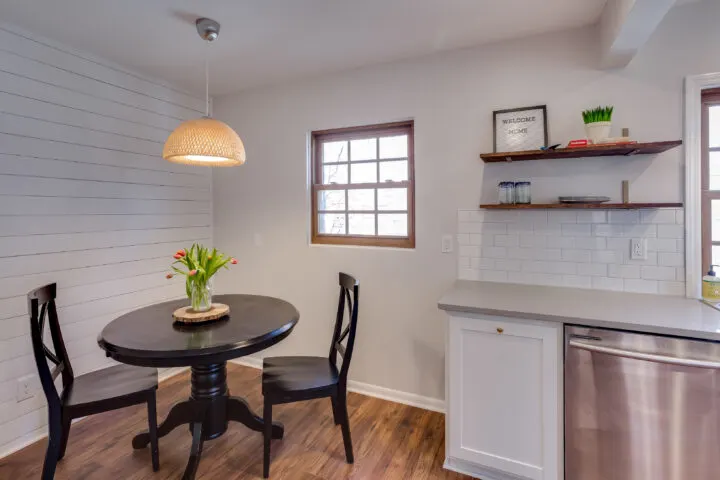
But I will admit that even I fell prey to the lure of shiplap walls when working on our Toledo flip house. The home was a small brick bungalow and I added a shiplap accent wall to the breakfast nook.
8 | Board and Batten Decorative Trim
Board and batten interior walls became popular during the Arts and Crafts movement. This same wood installation can also be found on the exterior of barns and farmhouses.
Many modern farmhouse-style homes (particularly new builds) have board and batten siding.
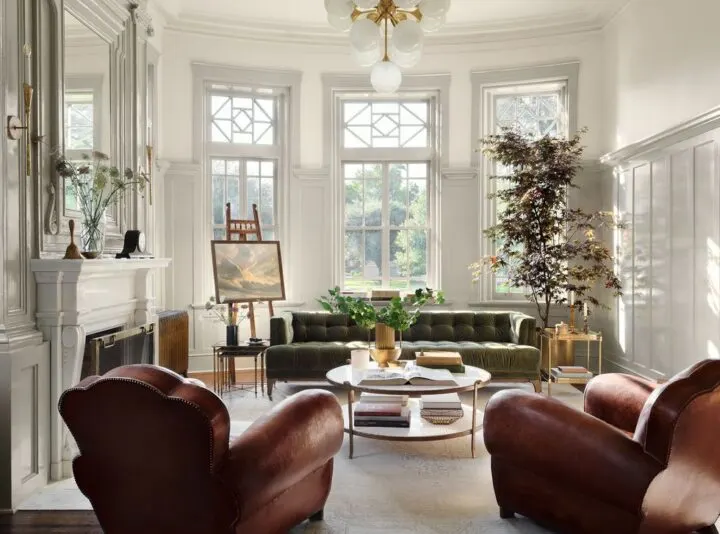
Adding this same decorative treatment to the interior walls of a home will add the same rustic and casual style to a space. This is very popular in “modern farmhouse” homes.
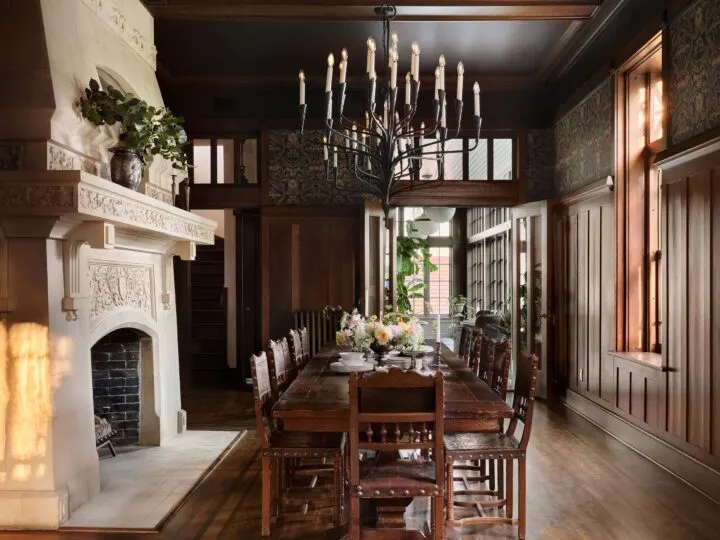
Here is another board and batten example from the gothic castle renovation on the Magnolia network. Unpainted wood paneling gives a formality to the dining room along with tons of architectural interest.
9 | Crown Molding & Baseboards
Crown molding has been around since the beginning of plaster ceilings. Baseboards became popular in America in the 1800s when plaster walls became preferred over wood wall panels.
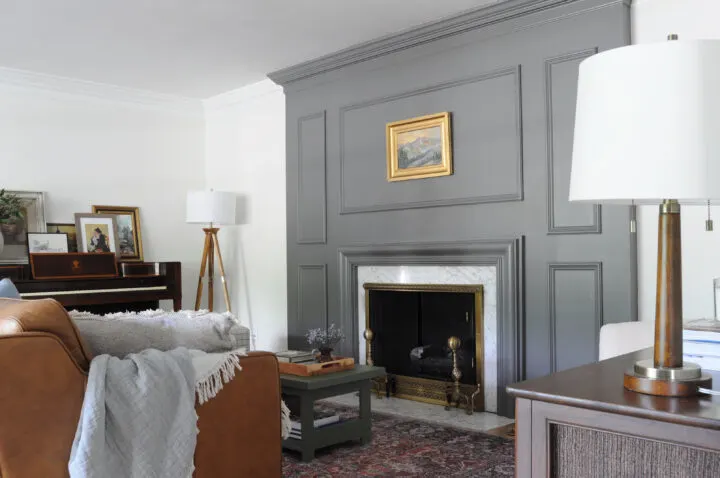
Crown molding is most commonly found in formal rooms of a home where guests are entertained. In our home, the traditional dining room and living room have crown molding throughout the entire room. The crown molding gives our home that classic look I love!
BONUS: Accent Walls
While I am not a huge fan of accent walls in a room, all of these decorative wall trim ideas can be used on one wall to create a focal point.

Geometric Patterns are a popular accent wall option in a bedroom.
Choosing Decorative Wall Trim and Molding for Your Home
Sarah from Room for Tuesday has fantastic content about choosing the best millwork and trim for your home. Adding trim and molding detail to your window casings and door frame will give your home a custom look.
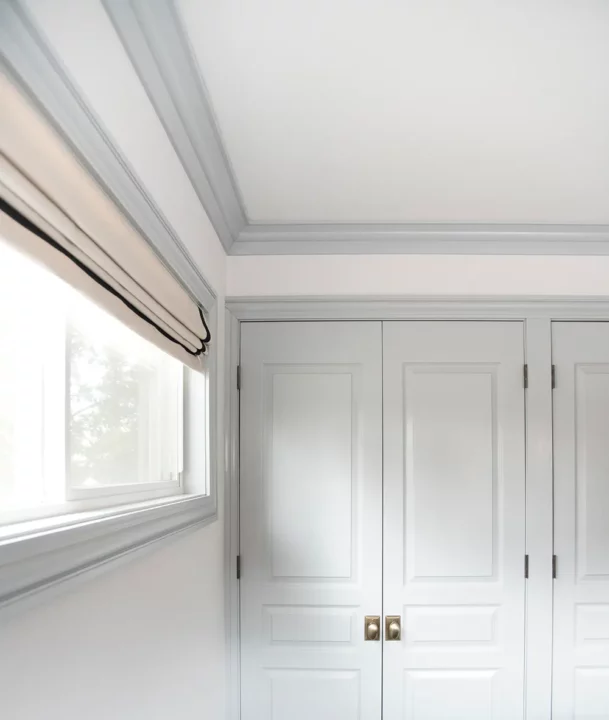
Decorative wall trim is a fantastic way to add charm, sophistication, and personality to your home. Whether you prefer the classic elegance of crown molding or the modern simplicity of vertical paneling, there’s a trim style to suit every taste.
Keeping in mind the style, size, and balance while choosing your decorative elements will ensure your home feels timeless for years to come. So, grab your tools, unleash your creativity, and transform your walls with these beautiful decorative wall trim ideas!
More Content You Will Love
- Rich, Moody Paint Colors For Your Next Project
- 1960s Bathroom Budget-Friendly Makeover | Blending Fun and Nostalgia
- Upcycling Old Furniture | ORC Week 3
- DIY Scalloped Edge Shelf | Easy IKEA Hack
- How to Paint an Exposed Basement Ceiling
- 9+ Creative DIY Kitchen Backsplash Ideas
- Easy IKEA Hemnes Dresser Hack to Try at Home
